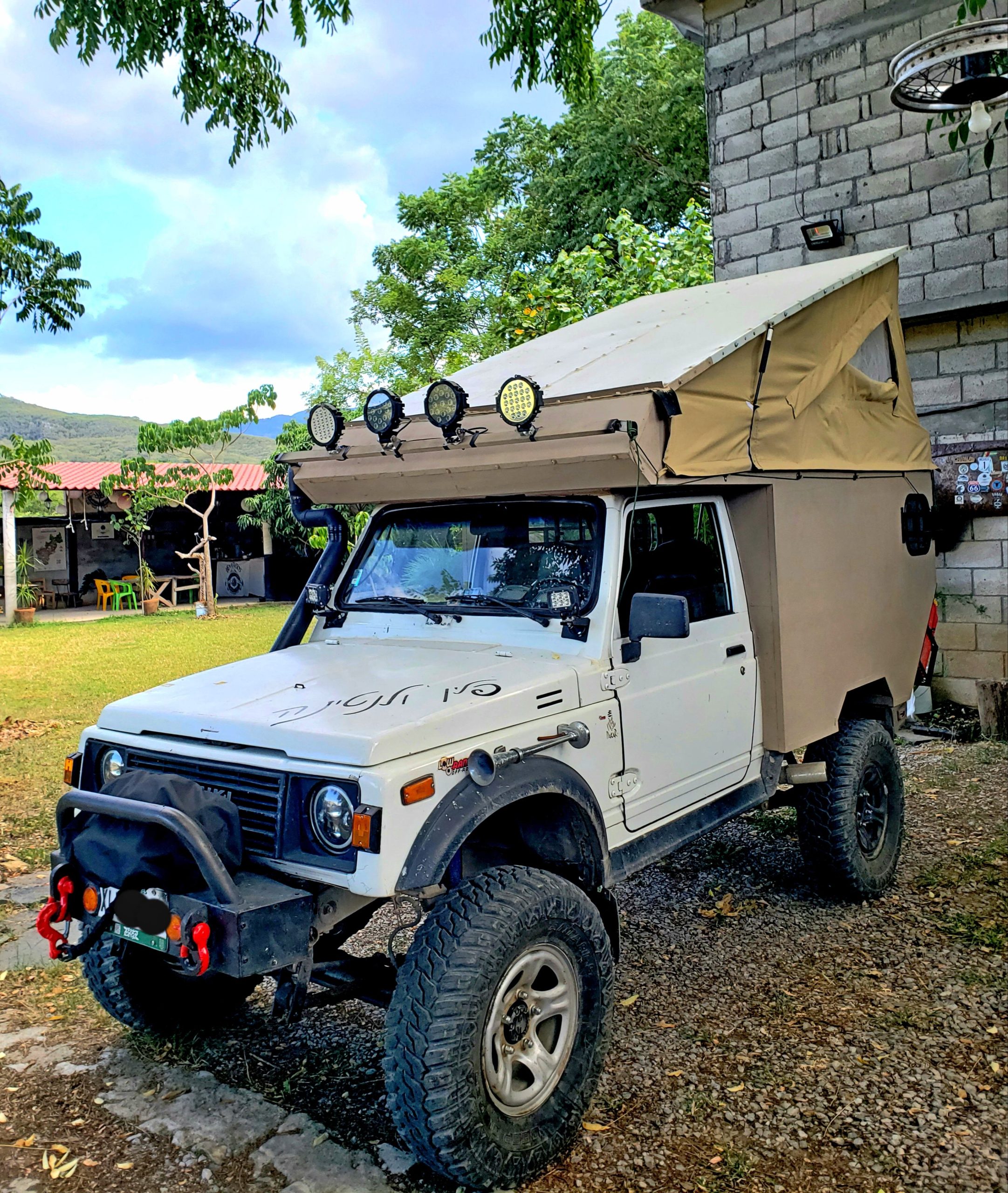The Suzuki Samurai (known internationally as the Jimny) originally belonged to the Japanese Kei class, the light automobile tax/legal class which spawned a multitude of tiny vehicles—some awesome, some not. The little Jimny was excellent indeed, and Suzuki has sold more than three million Jimnys in 194 countries. Renowned for reliability, capability, and off-road prowess, the little Suzuki has been stealing the hearts of hardened men and soccer moms alike since the ’70s, and having driven a few, we understand the appeal. The plucky little off-roader has all the tenacity of a mountain goat and all the charm of a bat-eared fox.
Daniel Perez is in the process of building an absolutely unique Suzuki Samurai camper, and we simply could not wait to show it to you. This vehicle is something else, a whiplash head turner that is sure to take the Perez family on some incredible adventures around their native Mexico and abroad. Daniel is a man of few words, but we managed to pry some golden nuggets of information from him.
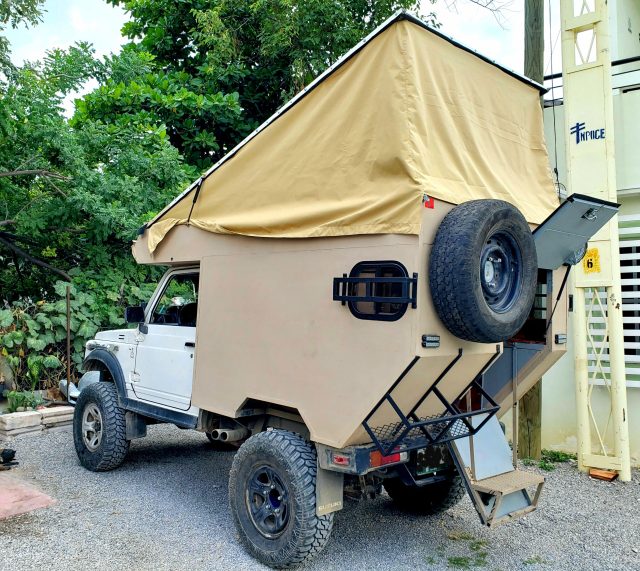
Tell me about your background and how it led you to build the camper
I have always liked to travel and do it frequently in Mexico. Three years ago, I traveled alone for two months on a motorcycle to the USA and Baja California Sur. However, when my child was born, I had to sell my bikes and find a new way to share my passion for traveling and enjoying nature with my little family.
What inspired the design?
The primary concerns were that of size and weight for traveling.
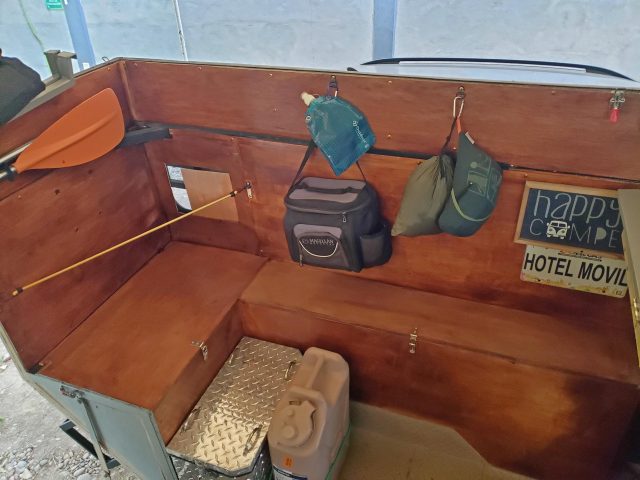
Tell me more about the design and construction process of the vehicle
I took advantage of all the space available and left most of the mechanics of the car original. The advantage is that due to its size, it can go to many places, along most routes. The vehicle has everything you need for cooking and storage and even includes a bathroom, shower, bed, and a constantly changing garden. [By this, we assume Daniel means that wherever they park becomes their garden. We like this idea, a lot.)

How long did the construction take?
So far, it has been eight months.
Why did you choose Suzuki as the base vehicle?
The Suzuki Samurai SJ413 is a vehicle with a lot of history, with great good mechanics; it’s simple and easy to repair. It is one of the best 4x4s I have ever used.
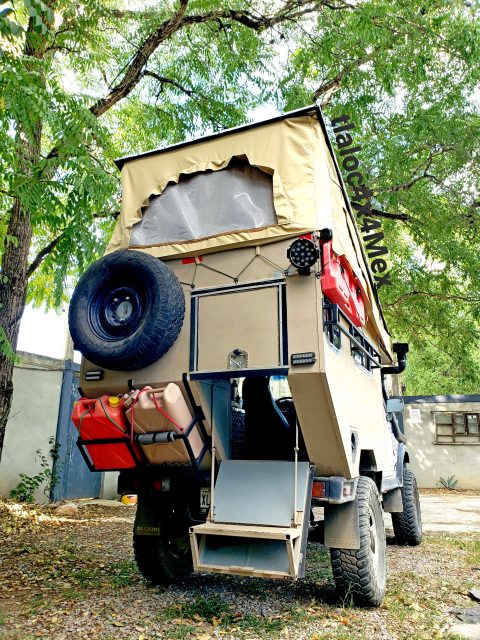
What fundamental modifications have you made to the vehicle itself?
We changed the engine from the original 1.3-liter to the Suzuki 1.6-liter while the chassis was made 60 centimeters longer to achieve more space for the camper.
What makes this camper unique?
Its size, the design, and that it is 100 percent handmade in the garage of my house.
Will the vehicle be commercially available?
I might reluctantly sell it in four years if I absolutely have to. I may have to go live in another country. If I can take it, I will.

Any unique story, anecdote, or quote you’d like to share?
I have done all the mechanical, electrical, carpentry, and blacksmith work personally with some guidance by specialists. I’m not particularly eager to leave it in workshops. Some visitors helped me to make the ‘draft’ of the capo (pop-top tent) canvas; there were a few ideas thrashed about and some conflicting opinions between the ‘experts,’ however it has come together nicely. My parents and siblings have told me that I’m crazy, and my wife feels that I am dedicating more time to this project than to her. But I think that any man with a passion will understand me and agree with the dedication that something like this takes.
A lot of our townsfolk have been inspired by my project, and it may motivate some to start building their own rigs. A frequent question is Where will my first trip be? And my response is, to the mountains to visit my parents’ cabin.
If you had to ask me how much I have invested, my answer would be that the most significant investment is not money, it’s the time I’ve put into the project: every weekend, between my business and the project, the hours and time that goes by without rest or meals.
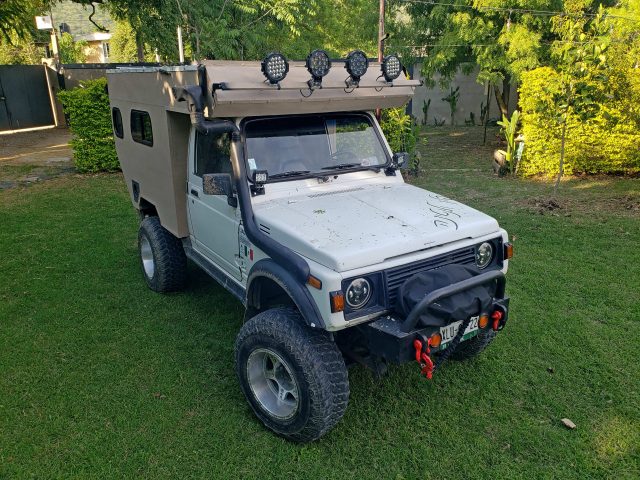
Does the vehicle have a nickname?
Not yet, but I am considering calling the camper Tlaloc, a God of the Aztec culture, the supreme God of rain, fertility, and water; wherever he goes, he gives life, joy, light, and inspiration.
No matter what his family says, Daniel is not crazy; you know this, and we know this. Daniel might, in fact, be a genius.
Once the build is completed, we will ask Daniel if he would not mind sharing his impressions of the vehicle as a practical overland vehicle and a few images of the completed interior.
You can follow the current build at @daniel_l4p
Our No Compromise Clause: We carefully screen all contributors to ensure they are independent and impartial. We never have and never will accept advertorial, and we do not allow advertising to influence our product or destination reviews.


